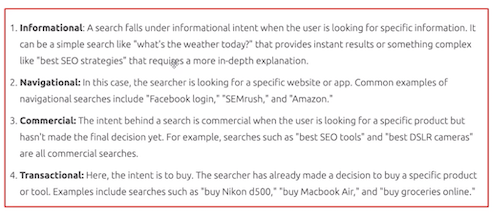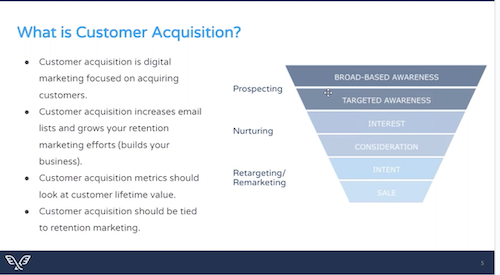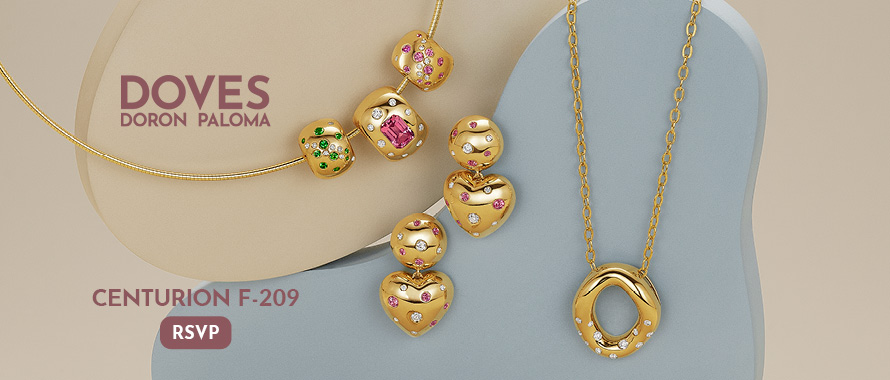Sales Strategy
How To Acquire An Online Customer Base Using Google, Part I | September 23, 2020 (0 comments)

Atlanta, GA—Every retailer knows that consumers research online before they ever make a purchase, especially when it’s not a familiar category. And with rare exception, the starting point for that research is Google.
It then goes without saying that the best way for jewelers to build their customer base from online search is to make sure they’re in the top-ranked search results on Google. In a special Centurion webinar, Ron Dod of the digital marketing agency Visiture gave some key tips for jewelers to use to boost their rankings on Google.
“You can go a mile deep into Google for customer acquisition, but even a high-level understanding can help build your customer base,” says Dod. It’s all in how you manage elements of your website to make sure Google ranks it near the top of its results for that search.
The first thing Dod emphasizes about customer acquisition is to think beyond basic metrics.
“Customer acquisition is a simple concept: it means getting more customers through your storefront using digital marketing.” But don’t stop there: it also helps other channels build up their traction, he explained. For example, if you’re selling a product that’s low price and high purchase frequency, using Google to get the first-time buyers is critical, but then you should be using those sales to build up your email list.
“Customer acquisition should always be looked at as customer lifetime. If you earn a customer, they can come back to buy later, and tell others about your products. So look at your ROAS (return on advertising spend) not as what it costs to acquire one new customer, but as customer lifetime value.”
Dod showed a funnel to illustrate, and identified four different search types: informational, navigational, commercial, and transactional. Someone very high in the funnel has never heard of you before, whereas someone at the bottom is the one you’ll easily convert to the sale. Likewise, the two types of search most likely to convert to sales are commercial and transactional.

Ron Dod says online searches fall into one of four categories.
“Google and ecommerce is very simple behavior. In the old days, you’d advertise a breakfast cereal on TV and hope someone bought your cereal the next time they’re in the grocery store. But with Google they’re already searching. They’re a lot more likely to convert to a customer."

Ron Dod's customer acquisition funnel model. The top bar is least likely to convert to a sale, whereas the targets at the bottom of the funnel are most likely to convert to a sale. Image: Visiture.
Google is broken down into two segments, organic and paid, explained Dod. Organic, which is free, is by far what drives the lion’s share of traffic. Paid media, meanwhile, is focuses on Google Shopping. Although it drives less traffic, it’s great for brands and a great way to connect with people searching for what you have.
Keywords are the backbone of organic Google search, explained Dod. Using an example of “real gold chains,” he showed a store that ranks very high in the category. And basically, they’re getting a lot of free traffic for their site.
“In SEO (search engine optimization), you want to create content to rank for commercial and product pages that rank for transactional,” he said. In either case, very descriptive keyword phrases are most likely to convert. “Diamond ring” is much less likely to convert than “pear-shape diamond engagement ring under $5,000.”
Sites that build traffic. Getting more traffic all starts with the foundation of a website, and the goal is to provide a great user experience (just like in a store!).
Again, a simplified explanation is that it starts with keyword research. What are people searching for? Are they looking to buy or research products? Those are the two things—commercial and transactional—that you want to optimize for.
Head spinning yet? No worries, says Dod. The best shortcut is to use a good platform to build your website, and it will have all those factors built in already. Choosing a good platform will eliminate or minimize SEO blunders.
One of the most overlooked elements of a website is its speed. Optimal is a 1.67-second load time for a top rank in Google.
“Google knows a lot about consumer behavior. Any time you arrive at a site and immediately click the back arrow, Google thinks it didn’t do a good job sending you where you want to go, and that the site isn’t providing a good experience, so it will rank something else higher,” explains Dod.
That’s the speed trap, so to speak: the irony is that Google doesn’t actually rank for speed—but a slow-loading site will drive most visitors to click the back arrow, which means the site experience isn’t good, and it will be punished for that. Site speed, on the other hand, improves user experience.
Once on your site, make good use of your navigation bar, says Dod. 80% of backlinks will go to your homepage—which Google uses to determine the value of your site. If you get to a site and you go in and don’t click the back arrow back to Google, it says “we did a good job sending Ron to this site to find what he wanted; he didn’t come back again.” It will then value that site more and raise it up in rankings. If you funnel navigation links to other pages on your site, those will rank higher as well.
“If you want to win, you have to have a good user experience. If your usability metrics—bounce rate, time on session, et cetera—are doing poorly, then you’re not giving a good user experience and you need to really refine that.”
Product and information. Also focus on search intent, says Dod. “If someone asks, ‘what is a real gold chain?’ they’re not looking for product, they’re looking for information. If you create a blog or a resource for research, it’ll rank higher.”
Content is the next level in SEO, says Dod. It’s essential if you want to win in a competitive landscape. “It’s really the way to drive high quality backlinks, and is very important in SEO. It’s one of Google’s ranking factors. Always has been, always will be, no matter what anyone says,” emphasizes Dod.
For example, someone is less likely to link to your diamond engagement ring page, but more likely to link to you your page describing how to clean your diamond engagement ring. “It makes you more authoritative, builds more brand information, and helps you become a bigger brand.”
Not only should you create content for your site, think about creating it for other sites as well, says Dod. “As [a purveyor of] a high price point item, you can be a thought leader and create content for other sites that drive users back to you.
“Content views equal SEO metrics,” says Dod. Good content contains subject matter relevance, and domain authority. But it’s a balancing act, he cautioned: it has to have both quality and quantity--and don't forget the all important keywords, which are critical to successful metrics. What are key words people are searching for?
Finally, Dod did acknowledge that being a larger brand does help in SEO. “That’s just the way it is. But as you build your brand, good things happen, you get more reputable, get more reviews, people have a higher trust factor to make a purchase, and you get a higher ranking.”
Watch a free replay of the webinar here.
Next time: Using Google paid search effectively.






